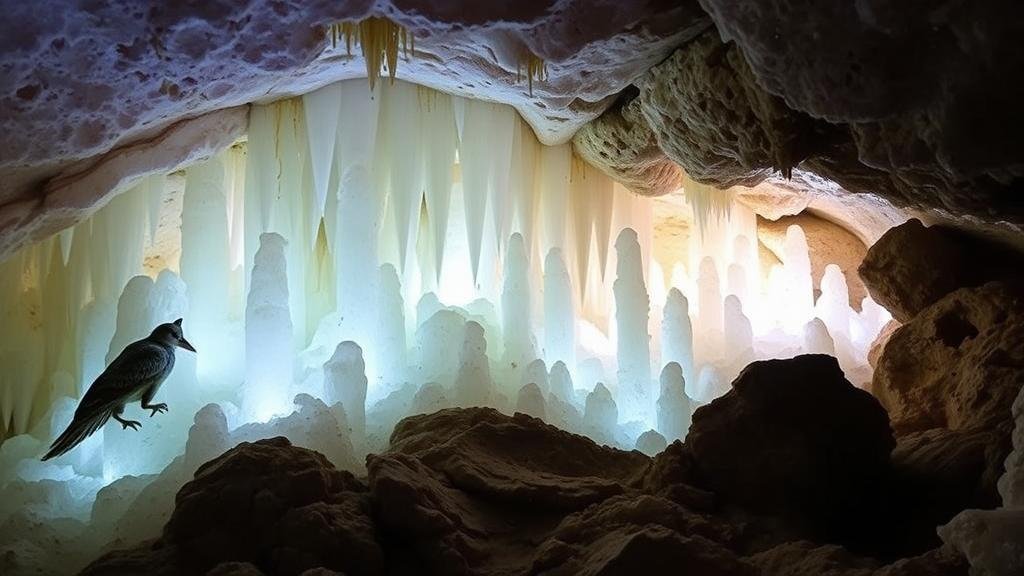Crystals in the Caverns: Exploring Giant Selenite Formations Underground
Crystals in the Caverns: Exploring Giant Selenite Formations Underground for Rockhounds and Mineral Collectors
For rockhounds and mineral collectors, few experiences rival the thrill of discovering natural wonders hidden within the Earth. Among these, the magnificent giant selenite formations found in various caverns across the globe showcase the breathtaking beauty and diversity of mineral deposits. This article will delve into what selenite is, where to find these formations, and practical tips for collectors eager to explore the subterranean realms.
Understanding Selenite
Selenite, a crystalline form of gypsum (CaSO4·2H2O), is renowned for its translucent appearance and remarkable clarity. It is commonly found in a variety of colors, predominantly white, but can also display shades of gray, yellow, and orange, depending on the presence of impurities. The name selenite is derived from the Greek word selenites, meaning moonstone, evoking its ethereal glow.
Selenite boasts a unique structure: it typically forms as larger, elongated crystals known as celestial selenite, which can grow to impressive sizes. The famed Giant Crystal Cave in Chihuahua, Mexico, is home to some of the largest selenite crystals ever documented, measuring up to 12 meters (approximately 39 feet) in length and weighing several tons.
Where to Find Giant Selenite Formations
One of the most notable locations to encounter giant selenite formations is in the Cueva de los Crystales (Cave of the Crystals) in Naica, Chihuahua, Mexico. This cave is located in a hydrothermal environment that has allowed selenite crystals to grow under ideal conditions. The high temperature (around 58°C or 136°F) and humidity (up to 90%) within the cave create a unique setting for crystal growth, resulting in some of the largest specimens found anywhere in the world.
Other significant locations include:
- The Crystal Cave in the island of Gotland, Sweden.
- The Cueva de las Manos in Patagonia, Argentina, known for its smaller, yet equally captivating formations.
- The Salt Caves of Iran, featuring selenite deposits that are both extensive and visually striking.
The Science Behind Selenite Formations
The formation of selenite crystals is a slow, intricate process that can take thousands of years. They begin forming when water containing dissolved calcium sulfate evaporates in a warm environment, leading to the crystallization of the mineral. Factors influencing crystal size and quality include:
- Temperature: Higher temperatures promote quicker evaporation, leading to larger crystals.
- Humidity: A consistent supply of moisture is critical for sustained crystal growth.
- Mineral content: The presence of other minerals can affect the color and clarity of selenite.
Statistically, selenite can grow at rates of up to several centimeters per millennium, showcasing the incredible patience of nature in creating these giants. Knowing this background can enhance a collectors appreciation for these magnificent structures.
Practical Tips for Collectors
For rockhounds and mineral collectors eager to explore caverns to view or collect selenite, here are some essential tips:
- Research the legality of collecting in your chosen location; many areas have regulations around mineral extraction.
- Consider participating in guided tours, which often provide access to restricted areas and increase safety.
- Invest in proper tools: a rock hammer, safety goggles, and gloves can assist in careful extraction.
- Practice responsible collecting by limiting your impact on the environment and leaving some specimens for future visitors.
Real-World Applications and Value
Selenite is not just a collectors gem; it also has practical applications. In the construction industry, it is used as a plaster ingredient, while in agriculture, it is used to amend alkaline soils. Also, its aesthetic appeal has made it popular in the art and design fields, with selenite being used in sculptures and decorative pieces.
The value of selenite varies depending on size, clarity, and uniqueness of the formation. High-quality specimens can command prices ranging from $10 to over $1,000, with larger, museum-quality pieces fetching much higher prices at auction. Collectors should keep an eye on market trends to better understand the value of potential acquisitions.
Conclusion
Exploring giant selenite formations is an enchanting journey into the depths of the Earth, filled with the allure of discovery and the thrill of collecting. Whether you visit renowned caverns or search lesser-known locales, understanding the science behind selenite and respecting the environmental significance of these formations will ensure a rewarding experience. As you embark on this subterranean adventure, remember to tread lightly and appreciate the ancient beauty that lies beneath our feet.


